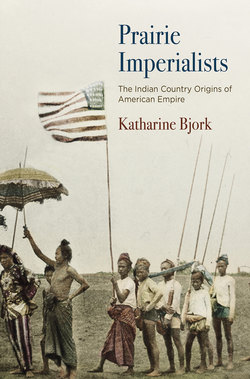Prairie Imperialists

Реклама. ООО «ЛитРес», ИНН: 7719571260.
Оглавление
Katharine Bjork. Prairie Imperialists
Отрывок из книги
Prairie Imperialists
Series editors: Brian DeLay, Steven Hahn, Amy Dru Stanley
.....
Following its victory over France in the Seven Years’ War, Britain’s Proclamation of 1763 articulated the concept of Lands and Territories beyond the reach of European settlement that were to be reserved “for the use of the said Indians.”27 This commitment to racial separatism was inscribed in the far-reaching Indian Trade and Intercourse Acts of the 1830s, in which the geographical limits of Indian Country were pushed further west and the content of native sovereignty was further circumscribed. Nineteenth-century Indian Country fulfilled the role envisioned on the early maps; it was the place to which America’s unwanted Indians could be removed.28 Federal legislation for Indian Country both recognized it as a place where Indian law and custom held sway, but also regarded the people living there as in need of civilizing. As William Unrau put it, “The Indian country of 1834 was as much a place for controlling human behavior and modifying culture as it was a physical space simply to be occupied by a displaced people in need of security and the means of survival.”29 Throughout the nineteenth century, a succession of Anglo-American institutions were put in charge of civilizing and pacifying—and expropriating—the native peoples of the continent: the Bureau of Indian Affairs, denominational churches, and the army. The Indian Bureau, as Brian DeLay has pointed out, was a colonial office focused on the domestic sphere long before the War Department created the Bureau of Insular Affairs to coordinate policy making for the new island possessions.30
Just as it had in federal relations with Indians, a commitment to mediated and circumscribed sovereignty also went along with colonial assessments of the backwardness and the lack of capacity for self-government of the peoples of America’s new possessions after the war with Spain. At the same time, Indian Country has also always referred to the places, and to the people acting in them, where the expansive sovereignty claims of the United States have been challenged and checked. In other words, limits on effective sovereignty in Indian Country cut both ways. The United States acted to curtail self-determination by natives, but just as the Lakota and Apaches had, Cubans, Filipinos, and other colonized peoples contested and evaded many of the forms of control the United States sought to impose on them.
.....